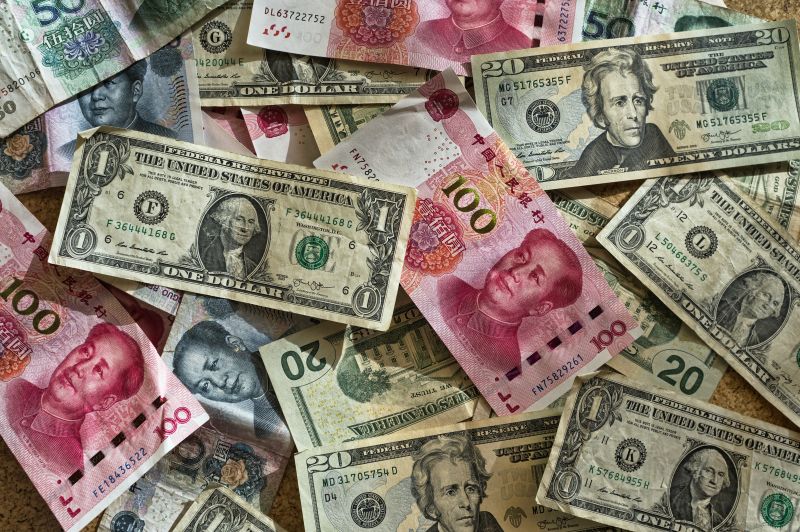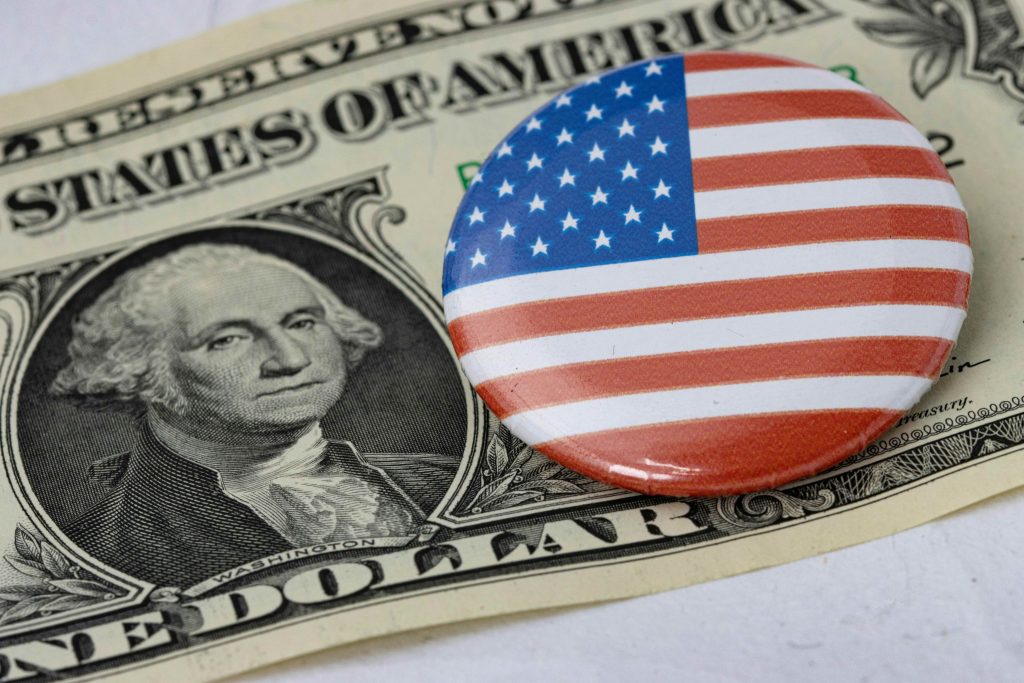Winds of Change: The Rise of the Chinese Yuan and Its Potential Impact on the Global Financial Market

By Zisheng Xing*
Ever since the Bretton Woods Agreement established the international monetary system after World War II, the U.S. dollar has been the world’s primary reserve and transactional currency for international trade.[1] International Monetary Fund statistics show that U.S. dollars account for sixty percent of the world’s foreign exchange reserves today.[2] Nearly fifty percent of the world’s international loans and global debt securities are denominated in dollars, and in foreign exchange markets, dollars are involved in almost ninety percent of all currency trading.[3] This dominant position grants the United States financial power in the global market and improves the effectiveness of U.S. economic sanctions against those who violate human rights, as well as those who disrupt world peace.[4]
However, the winds of change are felt through the air, as China and France conducted the first liquefied natural gas trade using the e-CNY, China’s digital fiat, on March 29, 2023.[5] This marks a significant first step for the rise of the Chinese yuan as a global transactional and reserve currency and raises concerns that these winds may evolve into a raging storm that will topple dollar supremacy in global finance.[6] But will these winds evolve into the furious tempest that scholars fear? Or will they die down into a meek spring breeze? Likely neither.
For the foreseeable future, the yuan is unlikely to seriously threaten the supremacy of the dollar simply because, historically, the global market’s acceptance of a dominant international currency has been very slow. It had taken the United States several decades after it had surpassed the British Empire as the world’s biggest economy to replace the pound sterling with the dollar as the dominant reserve currency, and currently China’s gross domestic product is only two-thirds of that of the United States.[7]
In addition, the success of the United States in the global financial market is the result of a combination of foreign policy, historical developments and a liberal market system that China is either unwilling to or yet unable to replicate. The current dollar dominance is sustained on several key factors: (1) the stability of U.S. monetary and financial policies, (2) the relative lack of U.S. barriers to cross-border capital flows, (3) the depth and liquidity of globally accessible markets for U.S. treasuries and other U.S. financial instruments, and (4) the reliance of global financial market participants on the U.S. rule of law.[8] By contrast, the lack of transparency and predictability on the role of the government in the market and the Chinese government’s own caution against liberalizing the country’s capital accounts have caused investors to be hesitant to settle transactions in yuan.[9] In a nutshell, the yuan will not be able to topple the U.S. dollar without significant reforms in market freedom and governmental transparency in China.
That being said, the yuan may indeed evolve into a local powerhouse firmly rooted in a regional economy of developing and sanctioned countries. A yuan-based regional economy may allow China to step in as a substitute source of financing to sanctioned countries such as Iran and Russia and facilitate transactions between these countries through the Cross-Border Interbank Payment System (“CIPS”), the People’s Bank of China’s (“PBoC”) own cross-border settlement system.[10] Recently, the yuan had already replaced the dollar as the most traded currency in Russia since the beginning of the Russo-Ukraine War in 2022.[11]
Countries that extensively engage with China in business may also contemplate a switch to the yuan as a transactional currency. Since the beginning of the “Belt and Road” Initiative (“BRI”) in 2013, it is estimated that China has invested a total of $932 billion on developmental projects across the world, mostly in developing countries, a figure projected to rise to $1.2-1.3 trillion by 2027.[12] Countries heavily involved in trading with China are incentivized to transact directly in yuan, saving the step of converting to the dollar. Pakistan had already begun replacing the dollar with the yuan for transactions with China, and recently, Brazil and China had signed a deal allowing the two countries to exchange goods using the yuan.[13]
Recent developments show a trend towards the gradual de-dollarization of the world and a slow move away from a post-World War II U.S. financial dominance to a more diversified world economy. While there are concerns about the increasing impact of authoritarianism in the wake of China’s rise in financial influence, such developments also provide the opportunity for self-sufficient regional economies more responsive to local financial needs.
* J.D. Candidate, Class of 2024, Sandra Day O’Connor College of Law at Arizona State University.
[1] Kimberly Amadeo, Bretton Woods System and 1944 Agreement, The Balance (May 26, 2022), https://www.thebalancemoney.com/bretton-woods-system-and-1944-agreement-3306133.
[2] Rebecca M. Nelson & Martin A. Weiss, Cong. Rsch. Serv., IF11707, The U.S. Dollar as the World’s Dominant Reserve Currency (2022).
[3] Id.
[4] See, e.g., Infographic – Impact of Sanctions on the Russian Economy, European Council (Mar. 17, 2023), https://www.consilium.europa.eu/en/infographics/impact-sanctions-russian-economy/ (Since a new round of sanctions were imposed on Russia after the Russo-Ukraine War began in 2022, it is estimated that Russia’s gross domestic product (GDP) dropped by 2.2% to 3.9% and is expected to decline by 3.3% to 5.6% in 2023. Russia’s inflation in 2022 reached almost 14%).
[5] Nicholas Say, China & France Complete First LNG Gas Trade Using Chinese CBDC, Blockonomi (Mar. 31, 2023), https://blockonomi.com/china-france-complete-first-lng-gas-trade-using-chinese-cbdc/.
[6] Sergio Goschenko, China Makes Advances in Ditching the US Dollar for Settlements — Inks Deal with Brazil and Completes First Yuan LNG Purchase, Bitcoin.com (Mar. 31, 2023), https://news.bitcoin.com/china-makes-advances-in-ditching-the-us-dollar-for-settlements-inks-deal-with-brazil-and-completes-first-yuan-lng-purchase/; Andrew Ackerman, U.S. Lawmakers Look to Digital Dollar to Compete with China, Wall St. J. (Aug. 8, 2022, 7:00 AM), https://www.wsj.com/articles/u-s-lawmakers-look-to-digital-dollar-to-compete-with-china-11659925037.
[7] See Cong. Rsch. Serv., supra note 2; Jianguo Xu, Developments and Implications of Central Bank Digital Currency: The Case of China e-CNY, 17 Asian Econ. Pol’y Rev. 235, 248 (2022).
[8] Darrell Duffie et al., Digital Currencies: The US, China, and the World at a Crossroads, 5 (Darrel Duffie & Elizabeth Economy eds., Hoover Inst. Press 2022).
[9] Cong. Rsch. Serv., supra note 2.
[10] See Emily Jin, Why China’s CIPS Matters (and Not for the Reasons You Think), Lawfare: China (April 5, 2022, 8:01 AM), https://www.lawfareblog.com/why-chinas-cips-matters-and-not-reasons-you-think.
[11] China’s Yuan Replaces Dollar as Most Traded Currency in Russia, Bloomberg (Apr. 3, 2023, 5:50 AM), https://www.bloomberg.com/news/articles/2023-04-03/china-s-yuan-replaces-dollar-as-most-traded-currency-in-russia.
[12] Nedopil Christopher, China Belt and Road Initiative (BRI) Investment Report H1 2022, Green Finance & Development Center, FISF Fudan University 5 (2022); Inside China’s Plan to Create a Modern Silk Road, Morgan Stanley (Mar. 14. 2018), https://www.morganstanley.com/ideas/china-belt-and-road.
[13] Muhammad Tayyab Safdar & Joshua Zabin, Pakistan and the Belt and Road: New Horizons for a Globalized RMB, The Diplomat (Sept. 4, 2020), https://thediplomat.com/2020/09/pakistan-and-the-belt-and-road-new-horizons-for-a-globalized-rmb; Goschenko, supra note 6.


